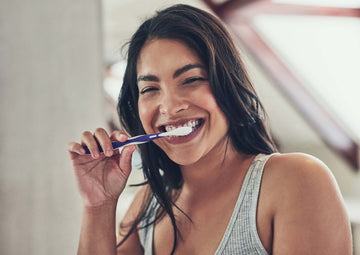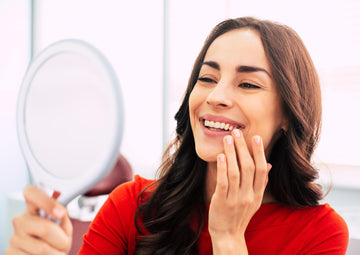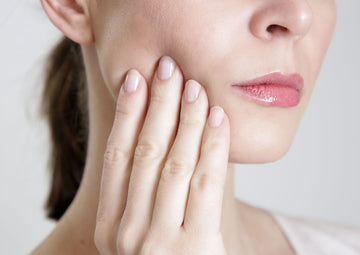

Most of us know that a toothbrush doesn’t last forever, but it can be difficult to remember when you last switched your toothbrush or what to look for when a toothbrush is nearing the end of its usefulness.
If you’ve ever wondered how often you should change your toothbrush, you’re not alone. We’ll dive into when you should replace your toothbrush and share tips for how to keep your toothbrush clean.
When to Change Your Toothbrush
Centers for Disease Control and Prevention recommends you change your manual toothbrush every three to four months or whenever your toothbrush appears to be wearing out. Once the bristles begin to lose their stiffness, the toothbrush becomes less effective in scrubbing off food and plaque that builds up throughout the day, which can lead to cavities. If you have an electric toothbrush, follow the manufacturer’s instructions as electric toothbrush heads may have different guidelines.
Children’s toothbrush bristles often fray due to vigorous brushing. If you notice your child’s toothbrush is starting to fray (even if it’s before that three- to four-month mark) you should swap it out. This is also a good opportunity to remind them about proper brushing technique to prevent them from damaging their gums.

Reasons to Change Your Toothbrush
There are a few instances when it’s a good idea to swap out your toothbrush, even if you haven’t been using it for three to four months.
If You’ve Been Sick
The human mouth is home to millions of bacteria and some of these germs can linger on your toothbrush well after you’ve brushed your teeth. These germs can travel to your toothpaste tube and could be transferred to other family members if you all share the same tube of toothpaste.
If you just got over an illness, it’s a good idea to toss your toothbrush. Replace any other toothbrushes that are stored near yours to minimize the chance of germs spreading from one brush to another.
If Someone Else Used Your Toothbrush
It happens. If you know or think someone might have used your toothbrush, it’s a good idea to replace it with a new one. Everyone’s mouth is home to a special blend of bacteria, so it’s better not to mix toothbrushes with others.
If Your Bristles Are Worn Down
If you brush with a heavy hand, this can wear down your toothbrush bristles and cause the brush to become frayed and ineffective. This often causes people to use even more pressure for the bristles to make contact with the teeth and gums, which irritates the gums. This can lead to gum recession and discomfort.
How to Know When It’s Time to Toss Your Toothbrush
As we’ve mentioned, one of the clearest signs that you’re due for a new toothbrush is if the bristles are frayed or worn down. If the toothbrush bristles are no longer stiff and straight, it’s time to toss. Also be on the lookout for toothbrush residue at the base of the bristles or along the handle of the toothbrush. This toothpaste residue is a prime environment for bacteria to grow in.
How to Store a Toothbrush for Optimal Longevity
After you replace your toothbrush with a new one, there are a few steps you can take to extend the lifespan of your toothbrush and keep it as germ-free as possible.
- After brushing, rinse your toothbrush completely with water. This will help clean off any excess toothpaste or food particles that were dislodged while brushing.
- Disinfect your toothbrush. Sanitize your toothbrush by swirling the bristles in antibacterial mouthwash for 30 seconds or soak the toothbrush in a mixture of two teaspoons of baking soda and one cup of water for no more than 15 minutes.
- Store your toothbrush away from other people’s toothbrushes. You can use a toothbrush holder with separate sections for each toothbrush, but make sure the brush heads aren’t touching. When you travel, be sure to separate your toothbrush from other toiletries in your bag.
- Keep your toothbrush away from the toilet. This doesn’t mean you have to store your toothbrush somewhere other than the bathroom, but if you can store your toothbrush in a cabinet or not directly next to the toilet, this will help keep your toothbrush free from the fine particles that spray from the toilet water when you flush. Additionally, make it a habit to close the toilet seat before you flush to cut down on the spread of these particles.
- Keep track of when you started using your toothbrush. Write down the date you opened your toothbrush with a Sharpie on the handle of your toothbrush or mark a date three to four months from when you opened the toothbrush as a reminder to swap it out for a new one.

As you begin your teeth whitening journey, it’s important to prioritize your overall oral health to ensure your white teeth are healthy teeth. By swapping out your toothbrush after three to four months of use, making regular trips to the dentist, and brushing for the recommended two minutes twice a day, you’ll be well on your way to a healthy and glowing smile.



